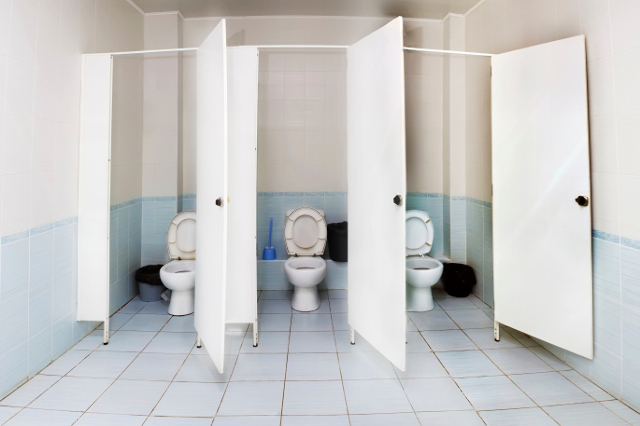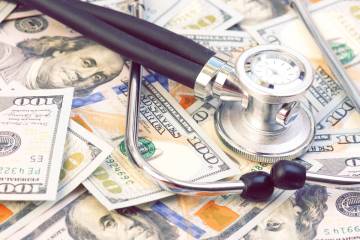The dilemma of public restrooms
Remember the diaper-wearing astronaut that drove hours to confront her lover? The story got me wondering, not about the sordid love triangle, but about her diaper.
As we know, the job requirements of an astronaut can preclude them from taking a bathroom break. To deal with this conundrum, they wear Maximum Absorption Garments, or adult diapers, under their space suits. And while the media proposed that she utilized diapers to cut down on travel time, I wonder if she suffered from “lutropublicaphobia,” the fear of public restrooms (no, I did not make that up). While few actually have the phobia, most of us have a healthy concern about the germs lurking in every nook and cranny of a public bathroom. To that extent, let’s take a look at how we can maintain hygiene in a public restroom.
Dr. Nina’s What You Need To Know: About Public Restroom Sanitation:
What types of germs are lurking? The list is loooooooong and ranges from E. coli to salmonella to hepatitis A to the potentially deadly, antibiotic resistant MRSA.
What is the dirtiest surface?
Surprise! It is not the toilet seat, but the floor that contains the largest concentration of germs. One study showed that when the bottom of women’s purses was swabbed to detect bacteria, one-third of them demonstrated evidence of fecal (poop) bacteria! Other danger areas with a high concentration of bacteria include the outside of the sanitary napkin disposal, sink, and faucet.
Are all public restrooms created equal?
No. In general, hospitals have the cleanest thrones because of the strength of disinfectants they use. On the other end of the spectrum are airport and airplane restrooms; they are considered the dirtiest. Airplane restrooms are tiny, thereby making it difficult for people to properly wash their hands or even want to wash their hands in the first place.
Eenie, meenie, minie, mo. Which stall to choose?
Middle stalls are generally the dirtiest because people tend to choose them the most; it appears we like company on both sides. When possible, choose the first stall.
Toilet seats Before flushing, lower the toilet seat (preferably with toilet tissue as a barrier). The reason being: toilets can spray fecal-infected water into the air. What do we do if there is no lid? Flush and run.
What is the most effective thing I can do to prevent an infection?
Wash our 2 hands and 10 fingers of mass infection. Rinsing with water followed by a 20 second soap scrub is the best defense against those treacherous germs. It’s a small price to pay to avoid eye, respiratory, and urinary infections, skin irritation, and digestive problems. To ensure we scrub for the necessary 20 seconds, sing “happy birthday” twice while getting every nook and cranny, front and back. Sounds easy enough? Unfortunately, only 77 percent of men and women attempt to wash their hands in public restrooms.
Should I use soap or hand sanitizer?
Soap and water is the BEST way to reduce the number of germs, especially when they are visibly dirty or greasy. This is because the friction from rubbing our hands together helps dislodge germs. If soap and water are not available, then use an alcohol-based hand sanitizer that contains at least 60% alcohol. Sanitizers with higher alcohol concentrations are more effective at killing germs than those with lower concentrations and non-alcohol based ones. Make sure to utilize a large enough volume of sanitizer and allow it to dry; do not wipe it off.
Avoid re-contaminating
After completing our business, we reach for one of the dirtiest surfaces—the sink faucet. Not a problem since we will be washing our hands, right? Wrong! Because we make contact with the faucet again to shut off the flow of water after washing, we can re-contaminate our hands. Automatic faucets obviate this problem. However, when they are not available, use a paper towel as a barrier.
Drying our hands Bacteria thrive in wet environments. Therefore, drying our hands is crucial. Paper towels and high-speed hand dryers have been shown to dry our paws equally well. However, high-speed hand dryers produce less mess, produce 42 percent less carbon dioxide, and are cheaper than paper towels. Only dilemma…how to shut off faucets and open the door to exit.
Let’s put the dilemma of public restrooms in perspective. Although they can be cringe-worthy, the possible infections from the dreaded stall are no different from the ones we can get anywhere else in public, including shaking hands. Additionally, germs are everywhere and we cannot live in a bubble, wear adult diapers, or gloves when out and about. However, we can follow proven techniques, in particular, washing our hands properly, to decrease our chances of becoming infected.
This information is for educational purposes and should not be considered specific medical advice. Always consult with a qualified medical professional regarding your individual circumstances.
Dr. Nina Radcliff is dedicated to her profession, her patients and her community, at large. She is passionate about sharing wise preventive health measures.




























